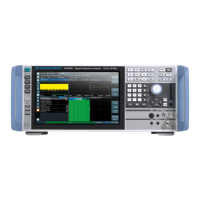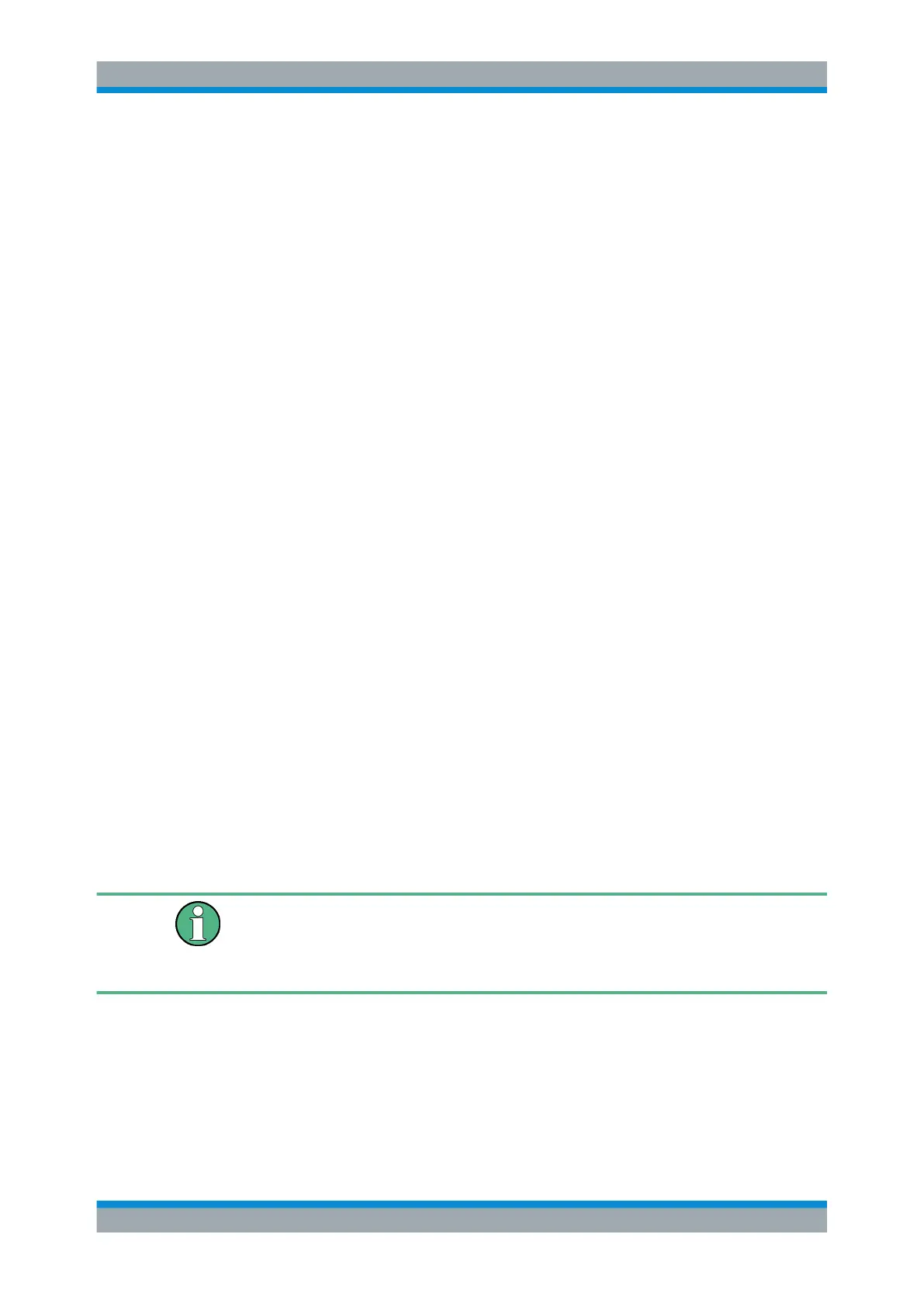Remote Commands
R&S
®
FSVA3000/ R&S
®
FSV3000
1059User Manual 1178.8520.02 ─ 01
//Queries the result of the upper limit line check
CALC:LIM3:FAIL?
//Queries the result of the lower limit line check
14.9 Managing Settings and Results
The commands required to store and load instrument settings and import and export
measurement results in a remote environment are described here.
The tasks for manual operation are described in Chapter 11, "Data Management",
on page 528.
Addressing drives
The various drives can be addressed via the "mass storage instrument specifier"
<msis> using the conventional Windows syntax. The internal hard disk is addressed by
"C:".
For details on storage locations refer to Chapter 11.3.2.2, "Storage Location and File-
name", on page 535.
The file names (<FileName> parameter) are given as string parameters enclosed in
quotation marks. They also comply with Windows conventions. Windows file names do
not distinguish between uppercase and lowercase notation.
Wildcards
The two characters "*" and "?" can be used as "wildcards", i.e., they are variables for a
selection of several files. The question mark "?" replaces exactly one character, the
asterisk replaces any of the remaining characters in the file name. "*.*" thus means all
files in a directory.
Path names
Storage locations can be specified either as absolute (including the entire path) or rela-
tive paths (including only subfolders of the current folder). Use the MMEM:CDIR? query
to determine the current folder.
Secure user mode
In secure user mode, settings that are to be stored on the instrument are stored to vol-
atile memory, which is restricted to 256 MHz. Thus, a "Memory full" error may occur
although the hard disk indicates that storage space is still available.
● General Data Storage and Loading Commands.................................................1060
● Selecting the Items to Store................................................................................1066
● Storing and Loading Instrument Settings............................................................1069
● Storing or Printing Screenshots.......................................................................... 1074
● Storing Measurement Results.............................................................................1085
● Examples: Managing Data..................................................................................1087
Managing Settings and Results

